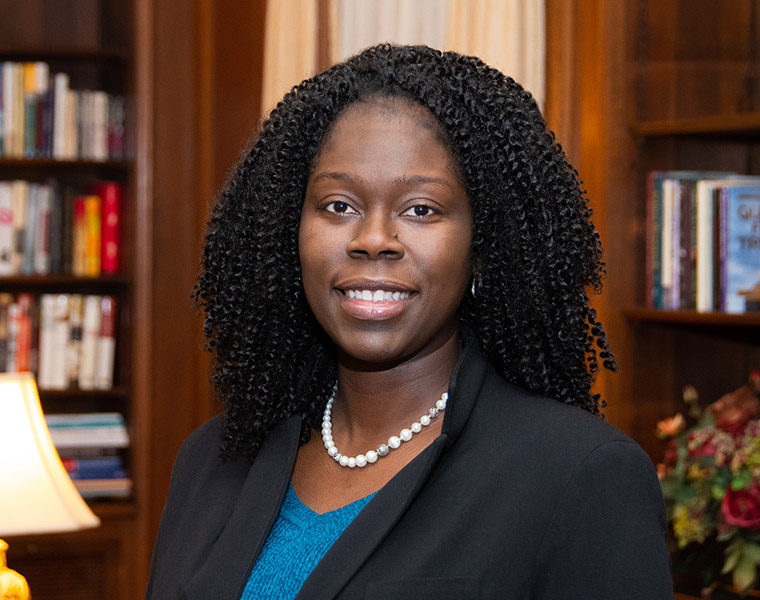CLEVELAND—With a $2.75 million, three-year grant from the Bristol-Myers Squibb (BMS) Foundation, researchers from Case Western Reserve University will lead a community wide initiative to create and apply innovative methods to prevent and detect lung cancer in underserved residents in Northeast Ohio.
The Community Collaborative for Lung Health Equity, directed by Monica Webb Hooper, a professor of oncology, family medicine and community health and psychological sciences at the Case Western Reserve School of Medicine, is a model focused on being out in the community to increase access to lung-cancer screening among eligible individuals, and to help them navigate treatment and support services.
“Lung cancer is the most common cause of cancer mortality in Northeast Ohio,” said Webb Hooper, the research project’s principal investigator and director of the Office of Cancer Disparities Research at the university’s Case Comprehensive Cancer Center (CCCC). “Socioeconomic status and race are related to late-stage presentation and higher lung-cancer death, and we want this project to address those disparities.”
To do so, Webb Hooper has established a team of key community stakeholders that includes experts in cancer disparities, clinical psychology, culturally specific intervention development, pulmonology, tobacco cessation, radiomics, primary care, community outreach, media/video production, and dissemination and implementation science.
The collaboration includes: the CCCC Community Advisory Board, University Hospitals Cleveland Medical Center, Neighborhood Family Practice, MedWorks, the City of Cleveland Department of Public Health, the Cuyahoga County Board of Health, United Way 211, the Cuyahoga Metropolitan Housing Authority, the American Cancer Society–Cleveland, the American Lung Association–Cleveland-Akron-Canton and CareSource.
“They’re all coming together for this effort,” Webb Hooper said.
Co-investigators for the initiative are: Erika Trapl, an associate professor in the Department of Population and Quantitative Health Sciences at the School of Medicine; Anant Madabhushi, the F. Alex Nason Professor II of Biomedical Engineering in the Department of Biomedical Engineering at the Case School of Engineering; Kurt Stange, director of the Center for Community Health Integration at the School of Medicine; and Catalina Teba, an assistant professor at the School of Medicine and University Hospitals.
“Dr. Webb Hooper has assembled an exceptional team to address patient engagement for vulnerable populations that will help increase prevention and early detection of lung cancer,” said John Damonti, president of the Bristol-Myers Squibb Foundation. “We are proud of what these partners will do to support patients in benefitting from potentially life-saving screening.”
The BMS Foundation promotes health equity and seeks to improve the health outcomes of populations disproportionately affected by serious diseases by strengthening health-care worker capacity, integrating medical care and community-based supportive services and mobilizing communities in the fight against disease.
More specifically, the research project is designed to develop and evaluate a lung-cancer screening aid, address tobacco use and apply cutting-edge artificial intelligence (AI) for more accurate and non-invasive diagnosis.
The initiative has four objectives:
- Work with the community partners to develop and evaluate a video-based lung cancer screening aid;
- Develop and evaluate a community-based concierge service to help more underserved residents get screened and treated;
- Leverage an ongoing tobacco cessation intervention study to engage eligible smokers in low-dose, computed-tomography (LDCT) screening.
- And use medical imaging being developed and tested in Madabhushi’s Center for Computational Imaging and Personalized Diagnostics to improve lung-cancer diagnosis and determine most effective treatment for LDCT patients.
“We anticipate that our project findings will lead to an understanding of lung-cancer prevention and early detection in underserved and racial/ethnic minority communities,” Webb Hooper said, “and our results will be the foundation for new approaches to increase screening among high-risk populations across the country.”
###
Case Western Reserve University is one of the country’s leading private research institutions. Located in Cleveland, we offer a unique combination of forward-thinking educational opportunities in an inspiring cultural setting. Our leading-edge faculty engage in teaching and research in a collaborative, hands-on environment. Our nationally recognized programs include arts and sciences, dental medicine, engineering, law, management, medicine, nursing and social work. About 5,100 undergraduate and 6,700 graduate students comprise our student body. Visit case.edu to see how Case Western Reserve thinks beyond the possible.
Original post https://alertarticles.info
